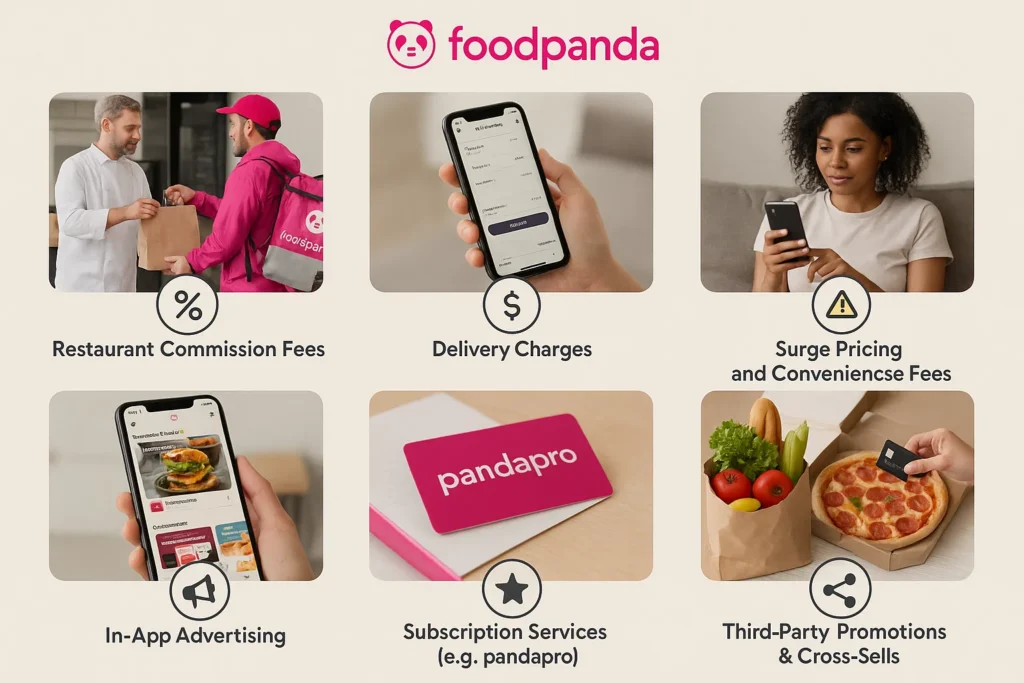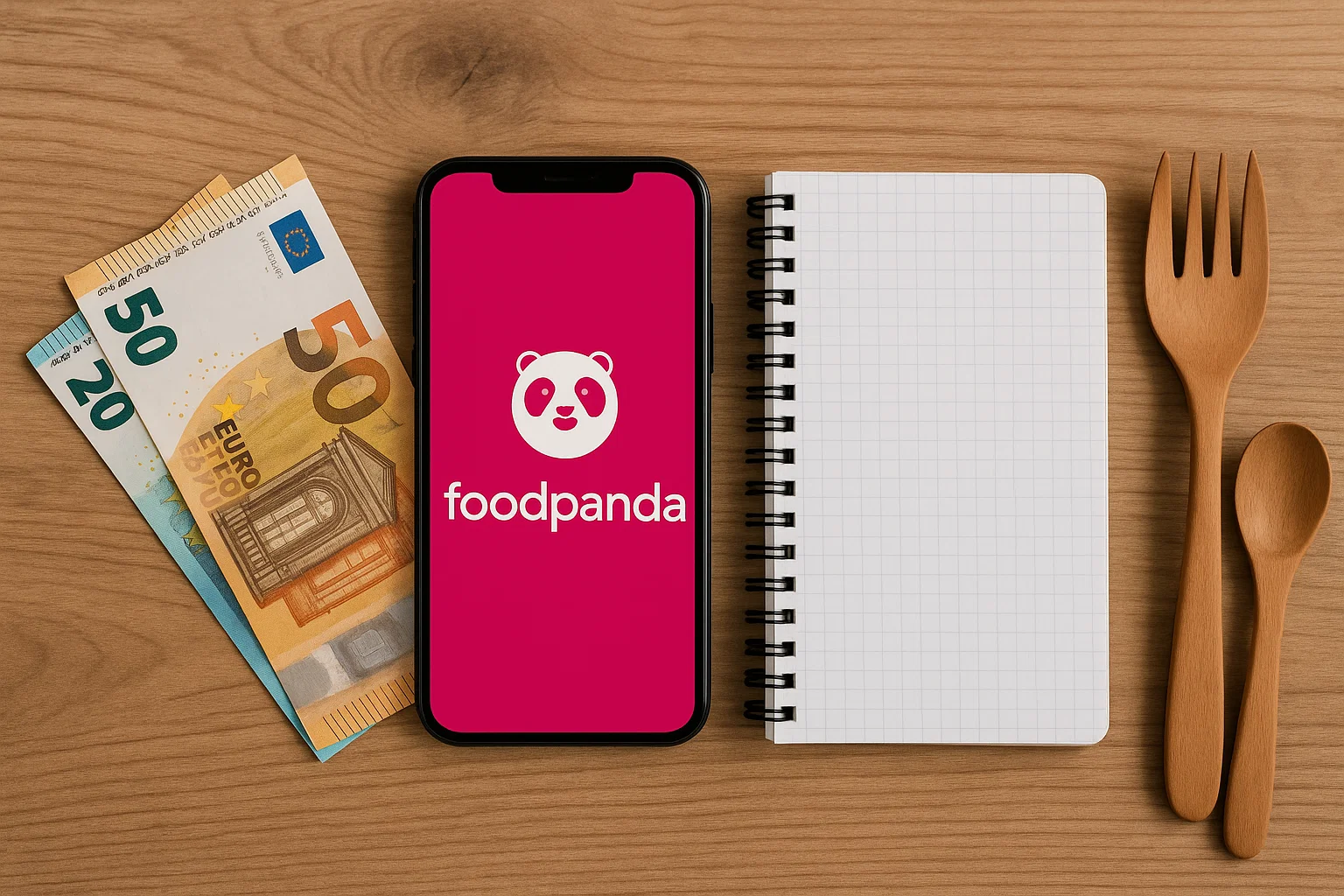Foodpanda is a pioneer in the online food delivery space, connecting millions of users with restaurants and delivery partners across Asia and beyond. Owned by Delivery Hero, it operates in markets like Singapore, Thailand, and Pakistan — offering not just restaurant deliveries, but also grocery and quick-commerce services.
The app stands out for its fast delivery, intuitive interface, and strong market presence in countries where food delivery adoption is skyrocketing. But beyond the customer experience lies a sophisticated revenue model — one that monetizes every step of the ordering journey.
In this blog, we’ll explore how Foodpanda earns money, break down its revenue channels, analyze why this model works so well in 2025, and show how startups can launch similar platforms using a ready-made Foodpanda clone from Miracuves.
Build your food delivery platform with a top-rated food delivery app development company. Get custom, scalable solutions tailored for startups and enterprises alike.
How Foodpanda Makes Money
Foodpanda operates on a multi-stream revenue model that balances partner commissions, delivery fees, advertising, and value-added services. Below are the primary income sources:
- Restaurant Commission Fees – Foodpanda charges restaurants a percentage on every order placed through its platform.
- Delivery Charges – Customers pay a delivery fee that varies by distance, location, and order value.
- Surge Pricing and Convenience Fees – Extra charges during peak hours or for small cart values.
- In-App Advertising – Restaurants can pay to appear in featured spots or sponsored listings within the app.
- Subscription Services (e.g., PandaPro) – A loyalty program offering free deliveries, discounts, and exclusive deals.
- Quick-Commerce (q-commerce) & Grocery Deliveries – Foodpanda runs dark stores and partners with grocers, earning commission and margin on essentials.
- Third-Party Promotions & Cross-Sells – Revenue from partnerships with payment providers, beverage brands, and insurance upsells.

This diversified approach helps Foodpanda generate revenue from every stakeholder in its ecosystem — restaurants, customers, advertisers, and retail partners.
Learn what the Foodpanda app is and how it works to connect millions with restaurants and delivery partners. Discover the features that make it a leading food delivery platform.
Detailed Breakdown of Revenue Channels
Restaurant Commission Fees
This is Foodpanda’s core revenue engine. Partner restaurants typically pay a 15% to 35% commission per order. The exact rate depends on the restaurant’s visibility, exclusivity, and whether Foodpanda handles the delivery or the restaurant does.
- Who Pays? Restaurants.
- Why It Scales? Zero inventory or food production costs; the platform earns from volume.
Delivery Charges
Customers are charged a fee for each delivery. This can be dynamic — based on distance, order value, or demand. Foodpanda retains this fee, which helps offset delivery partner payouts and boosts per-order revenue.
- Who Pays? End users.
- Why It Scales? Flexibility in pricing allows for both affordability and margin protection.
Surge Pricing and Convenience Fees
During high-demand hours or bad weather, Foodpanda adds a surge fee. Additionally, small order fees apply when a customer’s cart doesn’t meet a minimum value. These boost profitability without disrupting service.
- Who Pays? Customers.
- Why It Scales? Helps maintain operational efficiency during peak demand.
In-App Advertising
Restaurants can promote their listings through banners, featured placements, and boosted visibility. This pay-to-play model allows Foodpanda to monetize real estate inside the app.
- Who Pays? Restaurants and food brands.
- Why It Scales? Non-intrusive, high-ROI ads in a highly targeted environment.
Subscription Services (PandaPro)
PandaPro is Foodpanda’s premium subscription offering. For a monthly fee, users get free deliveries, special discounts, and exclusive offers. This creates recurring revenue and higher customer retention.
- Who Pays? Frequent customers.
- Why It Scales? Predictable income and increased order frequency from subscribers.
Quick-Commerce (Q-Commerce) & Grocery
Foodpanda has entered the q-commerce segment by launching dark stores and rapid delivery partnerships for essentials. It earns revenue via markup, partner commissions, and direct sales — especially in urban markets.
- Who Pays? Consumers buying groceries, everyday items.
- Why It Scales? Larger cart sizes, more frequent purchases, and higher margins than food delivery.
Third-Party Promotions & Cross-Sells
Foodpanda collaborates with payment gateways, beverage companies, and micro-insurance providers. These cross-promotions drive additional revenue through referrals or bundled service fees.
- Who Pays? Third-party brands and service partners.
- Why It Scales? Revenue without impacting core user experience.
Discover the Foodpanda marketing strategy that fueled its rise as the “Pink Panda.” Learn how these tactics built a global food delivery brand and what startups can replicate.
Can Startups Replicate Foodpanda’s Revenue Model?
Yes — but launching a Foodpanda-like platform from scratch isn’t a walk in the park.
Startups would need to build complex tech infrastructure for order management, real-time delivery tracking, partner onboarding, AI-based pricing, secure payments, and scalable logistics integrations. Add to that the need for a seamless UX, vendor dashboards, and app-based marketing modules — and the time and cost can become overwhelming.
That’s where Miracuves steps in.
With our pre-built Foodpanda Clone, startups and digital agencies can skip the guesswork and deploy a market-ready solution in record time. The clone is equipped with:
- Commission and delivery fee logic built-in
- Restaurant onboarding & payout modules
- Ad management system for in-app promotions
- Subscription-based loyalty (like PandaPro)
- Q-commerce and grocery-ready architecture
- Multi-language & multi-currency support
You get full monetization flexibility, scalable backend systems, and complete brand customization — all without starting from zero.
For founders looking to launch a profitable food delivery or q-commerce app, Miracuves offers the fastest route to market with a proven business model already built-in.
Compare the top clone scripts in 2025 with features and pricing to find the best fit for your startup. For budget clarity, see the full development cost guide before you launch.
The Foodpanda Clone by Miracuves is priced at $2,899, built for seamless food delivery and restaurant management.
Empower your business with real-time tracking, order management, and user-friendly design.
Go live in just 3–6 days with 60 days of tech support.
Conclusion
Foodpanda’s revenue model showcases how a well-designed multi-stream monetization strategy can fuel sustained growth in the highly competitive food delivery space. From partner commissions and surge fees to quick-commerce margins and in-app ads — the company earns revenue from every touchpoint across the customer journey.
This model works because it’s dynamic, data-driven, and adaptable to changing consumer behaviors — especially in 2025 when speed, convenience, and personalization are everything.
The best part? You don’t need a billion-dollar budget to launch something similar.
With Miracuves’ Foodpanda Clone, you can replicate this high-performance revenue model and enter the food delivery or q-commerce market fast — with monetization levers already built in and ready to scale.
FAQs
How does Foodpanda generate revenue?
Foodpanda generates revenue through restaurant commissions, delivery fees, surge pricing, in-app ads, subscription plans like PandaPro, grocery markups, and affiliate brand partnerships.
Is Foodpanda profitable in 2025?
Foodpanda’s profitability varies by region, but its focus on q-commerce, AI-driven pricing, and recurring revenue via subscriptions is helping it move toward sustainable profitability in 2025.
What are the main income sources for Foodpanda?
The core income sources include commissions from restaurants, delivery and service fees, paid advertising by vendors, quick-commerce margins, and subscription revenue from loyal users.
Can startups use the same revenue model as Foodpanda?
Yes, startups can replicate Foodpanda’s revenue model by combining partner commissions, delivery logic, in-app promotions, and subscription perks — especially with the help of a pre-built clone solution.
Does Miracuves offer a Foodpanda clone with monetization features?
Yes, Miracuves provides a robust Foodpanda clone with built-in monetization tools like commission management, loyalty programs, delivery pricing modules, ad placements, and q-commerce capabilities.
Related Articles :-
- Revenue Model of HungerStation: How Saudi Arabia’s Food Delivery Leader Drives Profit
- Revenue Model of Delivery Hero: Inside the Business Behind the Global Food Delivery Giant
- Revenue Model of Goldbelly: How It Serves Gourmet Food with a Side of Profits
- Revenue Model of Just Eat: How the Food Delivery Giant Monetizes Every Order
- Revenue Model of Grubhub: How the Food Delivery Giant Makes Money








